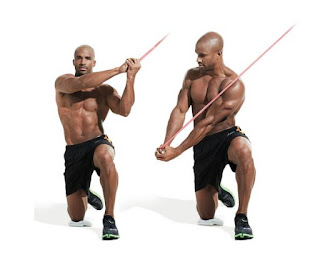It is a known fact that high
protein foods can curb your appetite to keep you feeling full for a longer
period of time. Studies have also suggested that protein rich breakfast
suppresses hunger far better than your carbohydrate-laden breakfast. Because not
all have the substantial appetite for protein-rich breakfast, protein shakes
have some up as a perfect solution.
For a bodybuilding enthusiast,
protein shakes are the simplest way of building muscle quickly. Also, protein
shakes help in reducing your recovery time after an intense workout. But like
everything else, the great amount of protein intake brings great
responsibility. If you do not practice caution while including protein
shakes in your diet, you might end up hurting your own body.
The fact that protein
shakes help you burn fat and keep fat at bay as well, will make you add
protein shakes to your daily diet without any further delay. However, a study
conducted by the University of Montreal found that 3 out of 4 bodybuilders and
professional athletes fail to reap the performance and recovery benefits of
protein supplements as they do not know how to take them properly.
This means, knowingly or
unknowingly you are making some protein shake mistakes that are hindering your
muscle building progress. In your bid to get the fittest physique with protein
shakes, we have decoded here some of the common protein shake mistakes you
might be making.
Mistake 1: Making Your Protein Shake A Milkshake
Adding dried fruits, sweetened nuts,
sugar loaded almond butter and other high on sugar ingredients to your protein
shake is a perfect recipe of health disaster.
If you are really finding it difficult to get
accustomed to the taste of your protein shake, add low sugar ingredients to it.
Some of the popular blends for a delectable protein shake include unsweetened
coconut milk, freshly ground flaxseeds, and frozen raspberries. With these
easily available ingredients and of course your protein shake you can blend fat
blasting breakfast for yourself within minutes.
Mistake 2: Choosing The Wrong Kind Of Protein
Too many options in the protein shake
market often leave us pretty confused. This also makes finding the right kind
of protein powder a challenging task. While the market is flourishing with the
variety of proteins in the form of whey, whey isolate, gold standard whey,
casein protein, soy protein and a lot more, not all are meant for your
particular requirement.
For example: Whey protein is the
second best protein found in milk after casein and is the most commonly
available protein powder for bodybuilders. Though whey gets absorbed quickly
and is a great pre and post workout supplement. But as a meal replacement
shake, whey protein is certainly not the right choice. Whey protein has the
same insulin raising effect as does your white bread. This means, you will
start feeling hungry after an hour of your whey intake with the temptation to
eat something calorie laden.
So, no matter what kind of protein powder you chose
make sure it contains at least 20 to 25 grams of protein per serving. To find
this out make sure your read the nutrition label beforehand. If you are very
bulky and want to lose significant amount of weight or recover from some injury
then you can increase the quantity to 30 grams or more.
Mistake 3: Buying Protein Powder With Unhealthy Ingredients
In this another common mistake, the
importance of reading the nutrition label should not be ignored. Some
manufacturers use preservatives, fructose, sugar alcohols and artificial
sweeteners to make their products more palatable. All these ingredients in your
box of protein powder should be enough for you to raise the red flag.
Always look for protein powder with fewer
ingredients that have low sugar impact. Some of the common names for sugar that
you can find at any protein powder’s label include: syrup, juice, concentrate,
sweetener, and fructose. Also, always buy product from a well known and trusted
brand only.
Mistake 4: You Are Timing It Wrong
Whether to take it before a workout
or after workout remains a matter of constant dilemma for men. Top it with the
belief that as long as protein is in your system you are sorted and most of the
guys end up taking their protein shake at the wrong time. The fact is when it
comes to protein supplements their timing is as important as the ingredients
you are taking with it.
As per the experts, the best time to
take protein shakes is within an hour of your workout. This is the time when
your body is most receptive. Also, your muscles need the right kind of fuel to
recover and repair themselves after an intense workout. Protein shake intake
post workout also leads to faster growth of muscles.
if you are consuming protein powder regularly, then chances are high
that you would be making some of the above mistakes. However, if u have
noticed something wrong with commercial protein powders then feel free to
share the same with us.































